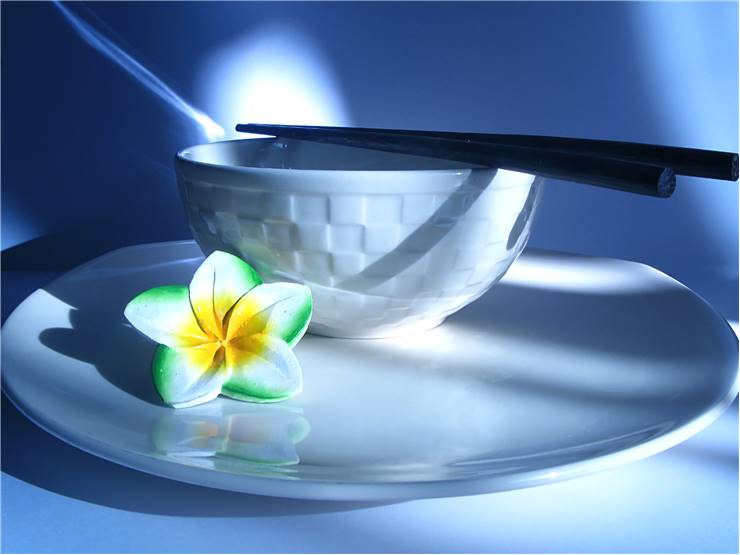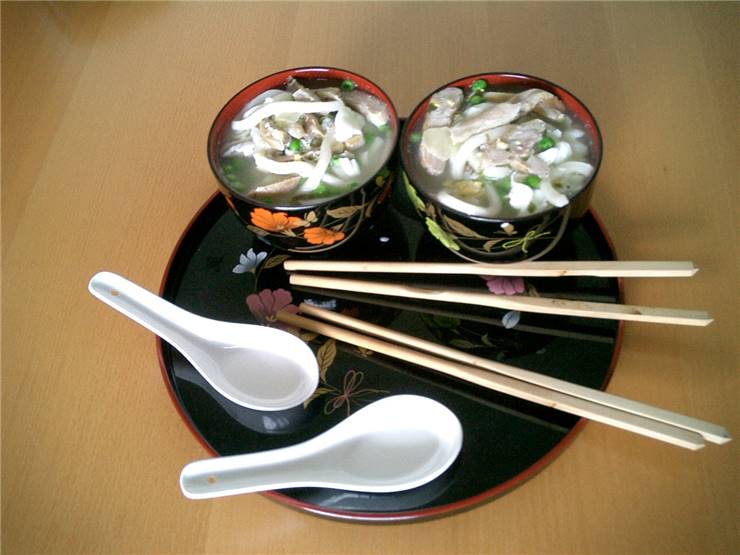Chopsticks History
History of eating utensils is filled with early inventions, and chopsticks are most certainly one of them. Created in China during the reign of Shang Dynasty between 1766 and 1122 BC, this innovative eating tool went through many changes of design and tradition, finally becoming one of the primary table utensils in the modern regions of China, Mongolia, Japan, Korea, Laos, Thailand, Vietnam and Burma. The exact origin of chopsticks is not known, but scientist debate that its creation came either from central China or from areas of Tibet and Nepal who had close connection to the Han Chinese populations. In the historical records from 2nd century BC mention that the last king of Shang Dynasty used ivory chopsticks around 1100 BC and that clue gives the possibility that wooden chopsticks were introduced some 500-1000 years earlier.
The oldest pair of chopsticks , made from bronze, was excavated from the 3200 year old ruins of city Yen, near modern Anyang, Henan. The size, material and design of those early chopsticks suggest that they were not initially used as an eating utensil, but rather as a tool for cooking, stirring the fire, serving or seizing bits of food. As the centuries went, material for creating chopsticks in Chinese courts changed. Bronze chopsticks came during the reign ofWestern Zhou Dynasty (1100 BC - 771 BC), lacquer chopstick with Western Han (206 BC - 24 AD), and gold and silver chopsticks came with Tang Dynasty (618 AD - 907 AD). Silver chopsticks received higher attention and popularity because of belief that they could detect poison in food. In reality, chemical reaction between some favorite poisons of that era (arsenic, cyanide) and some foods (rotten eggs, onion, garlic) created hydrogen sulfide which changed the colors of silver chopsticks. Other more expensive materials included jade, gold, bronze, agate, coral, ivory and brass.

By 500 AD, chopsticks slowly spread across the Asia and came to Vietnam, Korea and Japan. During those early days, Japanese regarded chopsticks as holy items and they were used only in religious ceremonies. After several centuries their designed changed from a designed of two joined pieces of bamboo to more modern look of two separate sticks, and by 17th century they manufactured them with lacquer wood.
Many wonder how chopstick managed to become so popular in Asia. This happened because of many reasons, but most important one was the tradition of cooking food that was already cut to small pieces (thus eliminating need for using knives at the table) and was perfectly suited to be handled with chopsticks. Modern day chopsticks differ in their design from country to country. Chinese design which is most popular is called Kuai-Zi (which means "quick little fellows") - they are 9 to 10 ingles long, rectangular in shape and with blunt ends. Japanese chopsticks are shorter, and with finely pointed ends.
Currently, Japan and China are the largest users of chopsticks. Japan uses over 24 billion pairs annually, and China over45 billion. To better regulate their manufacture and reduce impact on environment, Chinese government imposed a higher tax on all non-recyclable chopsticks. This tactic greatly improved the environmental impact of this eating utensil, which is currently demanding 25 million fully grown trees annually.


